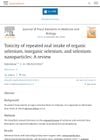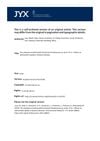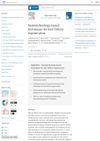Selenium And Its Inorganic Compounds: BAT Value Documentation, 2011
December 2019
TLDR Selenium is essential for health, but too much or too little can cause problems; blood selenium levels are a good measure of intake.
The document reviewed the properties, metabolism, and toxicity of selenium and its inorganic compounds, highlighting its essential role in bodily functions and the risks of both deficiency and excess. Selenium was absorbed through various routes, metabolized into selenides, and excreted biphasically. Deficiency could cause symptoms like hair loss, while excess intake could lead to toxic effects such as hair and nail loss, and increased diabetes risk at serum levels above 150 µg/l. Studies with volunteers and workers demonstrated significant changes in selenium levels and associated health impacts, emphasizing the narrow therapeutic range of selenium.



